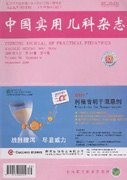Discussed the importance of multi-center clinical research and multidiscipline term model for childhood malignant solid tumor. The results of Adolescent and childhood malignant germ cell tumor,vinblastine and anaplastic large cell lymphoma, maintenance therapy for osteosarcoma were introduced as samples. Radiotherapy,stem cell transplantation and target therapy were discussed in comprehensive therapies of malignant solid tumor. The current situation and of China was presented. We needs further improving in this field.

